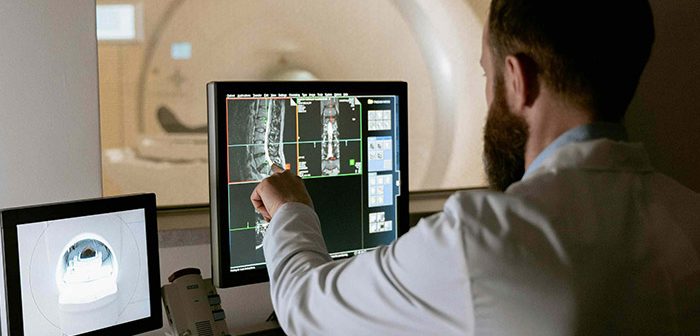
University of Adelaide research has found the use of artificial intelligence is becoming more common in medical diagnosis. However, there remains a major gap between it and traditional diagnosis from clinicians.
In a paper published in The Lancet Digital Health, Australian Institute for Machine Learning PhD student Lana Tikhomirov, Professor Carolyn Semmler, and the team from the University of Adelaide, have drawn on external research to investigate what’s known as the ‘AI chasm’.
The artificial intelligence chasm has occurred because the development and commercialisation of artificial intelligence decision-making systems has outpaced our understanding of their value for clinicians and how they impact human decision-making.
“This can have consequences such as automation bias (being blind to artificial intelligence errors) or misapplication,” said Tikhomirov. “Misconceptions about artificial intelligence also restrict our ability to maximise this new technology and augment the human properly.”
“Although technology implementation in other high-risk settings, such as increased automation in aeroplane cockpits, has been previously investigated to understand and improve how it is used, evaluating AI implementation for clinicians remains a neglected area,” she said. “We should be using AI more like a clinical drug rather than a device.”
The research found clinicians are contextually motivated, mentally resourceful decision makers whereas AI models make decisions without context or understanding correlations in data and patients.”
“The clinical environment is rich with sensory cues used to carry out diagnoses, even if they are unnoticeable to the novice observer,” Tikhomirov added. “For example, nodule brightness on a mammogram could indicate the presence of a specific type of tumour, or specific symptoms listed on the imaging request form could affect how sensitive a radiologist will be to finding features.”
“With experience, clinicians learn which cues guide their attention towards the most clinically relevant information in their environment. This ability to use domain-relevant information is known as cue utilisation and it is a hallmark of expertise, which enables clinicians to rapidly extract the essential features from the clinical scene while remaining highly accurate, guiding subsequent processing and analysis of specific clinical features. An AI model cannot question its dataset in the same way clinicians are encouraged to question the validity of what they have been taught – a practice in the clinical setting called epistemic humility.”






